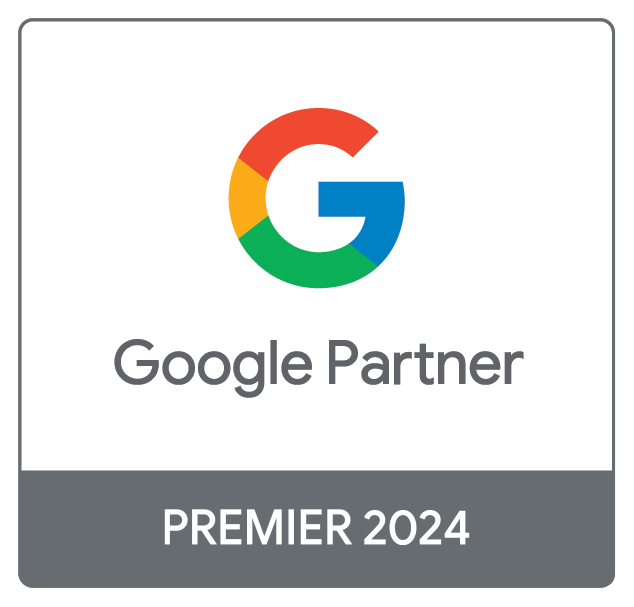Last month we hosted our 1st Google Partner event, “Inside the Internet: Boost sales and conversions with multichannel marketing”. We had a few exciting talks during the event and, as I have a strong passion for designing multichannel digital marketing strategies, I’ve decided to share my knowledge on the topic. So here are the key takeaways from my talk ☺
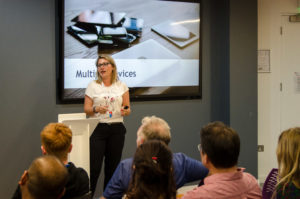
Today, businesses have to make it as easy as possible for customers to buy from them and to achieve that, they have to make themselves visible on a variety of channels. Multichannel marketing can help you not only to reach a wider audience but also boost conversions. So, how is it done?
Based on different studies, customers need between 6-8 touches with a brand before making a commitment/buying from them.
I love shoes, and have recently bought a pair for an upcoming wedding… I visited a few brand sites where I usually buy shoes. I then ‘googled’ a few other shops who sell shoes for special occasions. I also read a few articles to find out which colour of shoes will suit the pink dress I bought best. I was of course presented with some remarketing banner ads from 1 or 2 brands, a few Facebook ads and one brand even showed me a YouTube ad!
I was doing my research on my mobile while going home on the train, followed by research on my iPad in front of the TV and finished at work on the bigger screen where I could evaluate if I really liked the shoes.
I’m a very spoiled Internet user so I expect the best user experience. If I add a product to the basket on my mobile, I want to see it in my basket when I switch to desktop. That’s still an issue for some websites so unfortunately some of them dropped from the competition as I was too lazy to start the research again.
 It took me probably 2 weeks to do my research and 2 brands stood out from the crowd – they were ranking well on Google for relevant terms and had Google Shopping ads, they had good, relevant content on the site and they retargeted me with relevant ads on relevant websites (one with a 10% off offer!).
It took me probably 2 weeks to do my research and 2 brands stood out from the crowd – they were ranking well on Google for relevant terms and had Google Shopping ads, they had good, relevant content on the site and they retargeted me with relevant ads on relevant websites (one with a 10% off offer!).
Because I was exposed to these 2 brands multiple times, I felt like I knew them already and it helped me make my decision. They exposed themselves to me at different stages of my customer journey: from research and engagement, to consideration and actual purchase.
So if you are covering a number of platforms as opposed to just one or two, you are more likely to hit each of these touches quicker and in the right way.
It’s just one example of the buying cycle but similar journeys are taking place all the time.
Purchase is no longer a linear route and you need to account for the fact that potential buyers might be coming from different channels, different devices, at different times, etc. So how can we create effective multichannel marketing campaigns with multiple touchpoints that ensure we are there when they are looking for relevant information, products, services?
1. Identify customer touchpoints
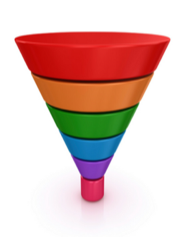 Research where your customers usually buy from and how they find you. It could be your website, social media channels, billboards or maybe an email marketing. Then consider different stages of the customer buying cycle (awareness, engagement, consideration, purchase, usage, retention) and map them out with the channels you identified. For example, do customers tend to find out about you via Facebook ads in the awareness stage but make the decision to buy on your website?
Research where your customers usually buy from and how they find you. It could be your website, social media channels, billboards or maybe an email marketing. Then consider different stages of the customer buying cycle (awareness, engagement, consideration, purchase, usage, retention) and map them out with the channels you identified. For example, do customers tend to find out about you via Facebook ads in the awareness stage but make the decision to buy on your website?
2. Choose the most effective channels
It’s important to notice that spreading your strategy across too many channels can be harmful for the overall performance. It’s best to choose less channels (one or two) for each stage of the customer journey for the beginning and monitor its performance and add more at a later stage (if needed).
By having a presence across multiple channels you will reach a wider audience, e.g. customers who use Facebook might not use Twitter and vice versa.
It’s also important to figure out what content performs best on each channel and incorporate that into your strategy, e.g. use whitepapers or case studies on LinkedIn.
3. Create cohesive campaign
Each channel works slightly differently and have different objectives, but your strategy should be connected. Create a strategy with a cohesive message across channels and, based on data, evolve your messaging to get the best from it and increase conversions.
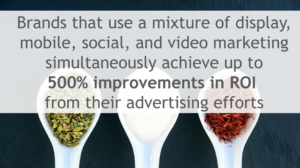
4. Streamline your multichannel strategy
After we’ve chosen the most effective channels, we need to make sure they are working together, making it easy for customers to move from one to another.
These days the customer journey is fragmented, jumping between devices and channels, that’s why it’s so important to create a connected journey. When your potential customers are exposed to your brand on their favourite channel, they will be more willing to convert.
For example, if you want people to contact you, you need to give them options in case they don’t like the one your provided. Some of them might like to call, some prefer email and others live chat.
5. Reach the right people at the right time
Because customers are more in control of their spending than ever before, it’s almost impossible for brands to push purchases on them. Instead, the customers need to feel like they’re making the decision, which is why it’s important to be there for them at the right time.
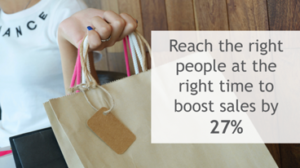
Getting personal and giving people what they want when they want it is a huge part of why multi-channel marketing is so successful, and marketers who are personalising the customers’ web experience see, on average, a 27% increase in sales.
6. Implement mobile marketing
We are living in a multi-device world so when we talk about having a multichannel approach, we can’t not mention mobile. Nowadays the majority of shoppers are choosing to make their purchases on mobile devices rather than in-store or on desktop. As most people have their mobile devices with them all the time, brands can integrate personalisation and engagement with potential customers wherever they are and whenever they are looking for information.
For example, you can take advantage of the location and target people who are close to your store or send out specific messages to people who live in certain locations.
We can expect further increases in personalisation for multichannel marketing, where people’s mobile devices become the central platform to reach them in the right place at the right time. As mobile continues to be the top device for consumers to buy, we can expect multichannel marketing to continue to boost conversions.
With so much evidence pointing towards multichannel marketing as the best way forward, it’s important for brands to start integrating their consumer’s favourite channels to create a connected experience that funnels them through the different stages of the customer journey.
It’s our job to reach customers where they’re hanging out, and multichannel marketing lets us do exactly that. When consumers feel comfortable with the platform they’re on, they’re more likely to feel a connection with the brand and, therefore, buy from them.
Are you already taking advantage of multichannel marketing and increasing your conversions or are you just starting? Either way, give us a call to see how we can help!


